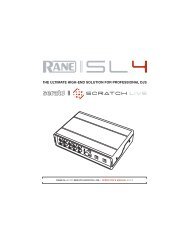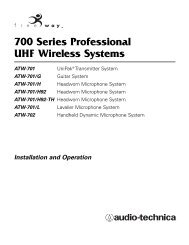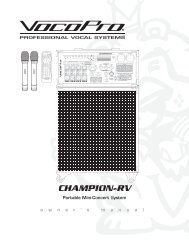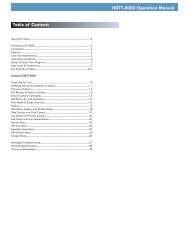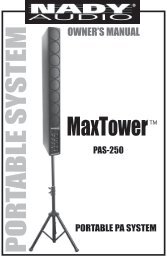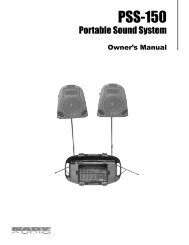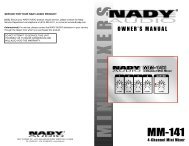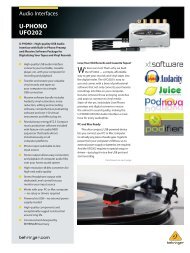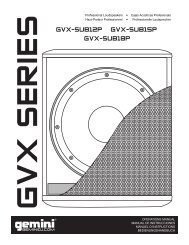CA1 ⢠CA1T - Full Compass
CA1 ⢠CA1T - Full Compass
CA1 ⢠CA1T - Full Compass
Create successful ePaper yourself
Turn your PDF publications into a flip-book with our unique Google optimized e-Paper software.
not exposed to direct sunlight or direct radiation or reflection from any heat source.<br />
Installing the loudspeaker systems choose a location that gets not affected by extreme<br />
and/or constant vibration or other mechanical oscillation. Also make sure that<br />
the speakers are installed at locations that are free from dust and/or moisture.<br />
CAUTION<br />
We strongly recommend that you leave the connection of the appliance to the qualified<br />
and experienced service technical who is specialized in connecting electrical and electronically<br />
equipment. Do not take the risk of electro-shock or shock hazard. To reduce the risk of<br />
electro-shock all connections have to be accomplished before it is permissible to connect<br />
the amplifier to the main supply. Before connecting the appliance to the mains supply, once<br />
again make certain that all connections are carried out correctly and that no short-circuits<br />
exist. The overall sound reinforcement installation has to be in accordance to the laws regulations,<br />
standards and guidelines that are relevant and applicable in the country where the<br />
equipment is going to be operated.<br />
AC POWER SUPPLY<br />
CAUTION<br />
Before using the amplifier for the first time make sure that the appliance IS set in accordance<br />
to your mains supply. Otherwise, please consult your Yorkville dealer who<br />
will configure your equipment for the correct voltage. Connect the amplifier only to<br />
grounded mains outlets. Connecting the amplifier to the mains supply (115Vac respectively<br />
230Vac) has to be accomplished by inserting the supplied mains cord into<br />
the corresponding socket (15) and afterward plugging it into a mains outlet.<br />
DC POWER SUPPLY<br />
CAUTION<br />
A 24V DC power source (i e. a battery) has to be connected to the terminals (18) that<br />
are covered by the protective lid. To reduce the risk of dropping voltage to a minimum<br />
and to eliminate the danger of damaging the battery cables by thermal overload,<br />
these cables have to be at least 2.5mm 2 in diameter, each. Switching the amplifier on<br />
or off is performed through the power switch (33).<br />
CONNECTING THE OUTPUT TERMINALS<br />
CAUTION<br />
To avoid the risk of electrical shock, never touch the bare conductors leading to the<br />
output terminals of the amplifier when it is in operation. Under figures, show the possible<br />
connections of thee OUTPUT speaker terminals accessible by removing the<br />
protective cover. Bear in mind the following rules:<br />
Constant Impedance Lines<br />
• The total impedance of the speakers connected must correspond to that selected<br />
on amplifier’s output terminals.<br />
• The sum of the power capacities of the speakers must be no lower than the amplifier’s<br />
power capacity.<br />
• The length of the connecting cables must be as possible; in any case, the longer the<br />
distance to be covered and the greater must be the cross-section of the cables.<br />
Constant voltage lines<br />
• Each speaker must be equipped with a line transformer with an input voltage equal<br />
to that of the line (25, 70, 100V).<br />
• The sum of the power capacities of the speakers must not exceed the output<br />
power capacity of the amplifier (i.e. total wattage of speakers installed in zones<br />
1 through 4).<br />
11



